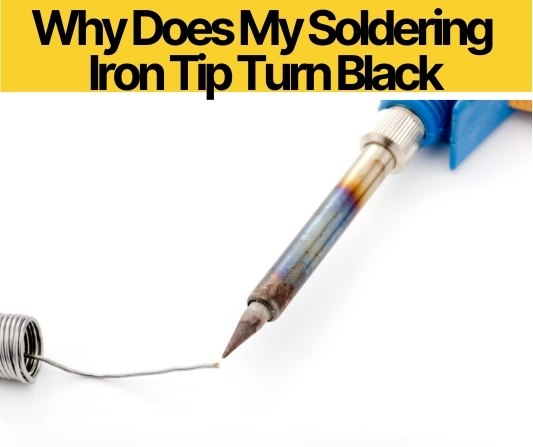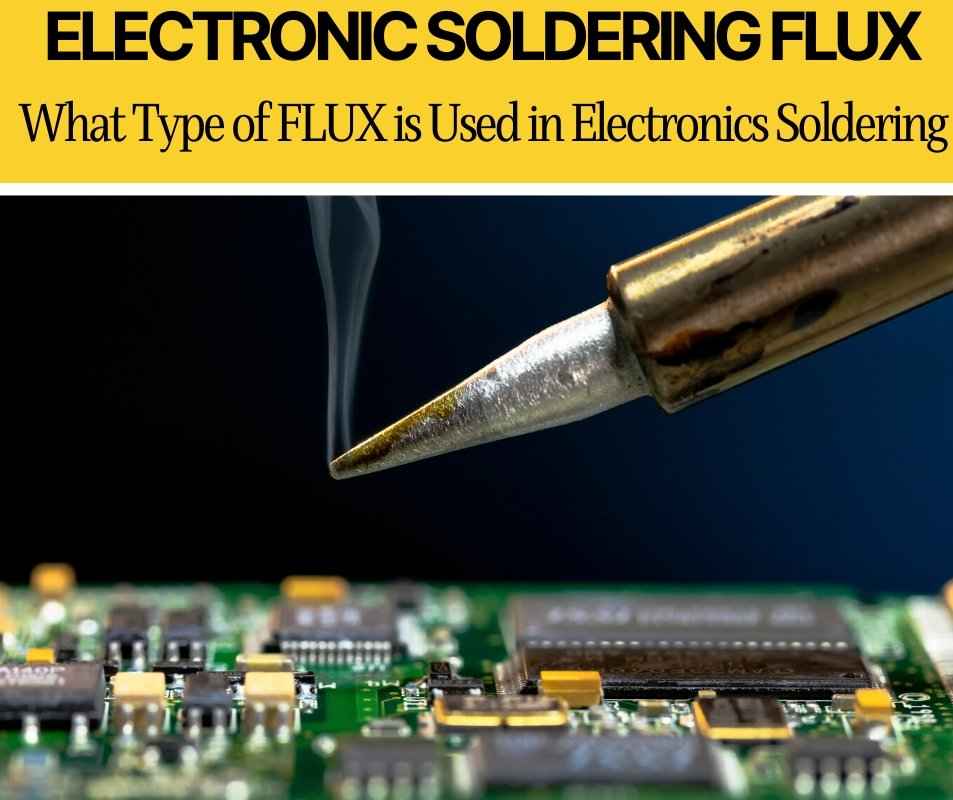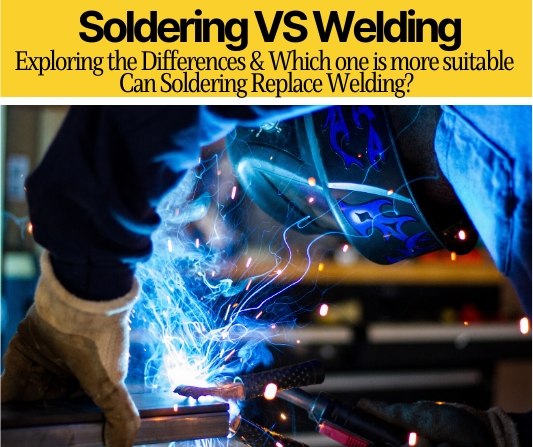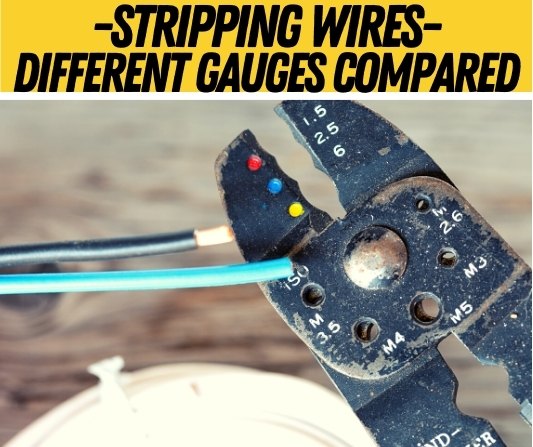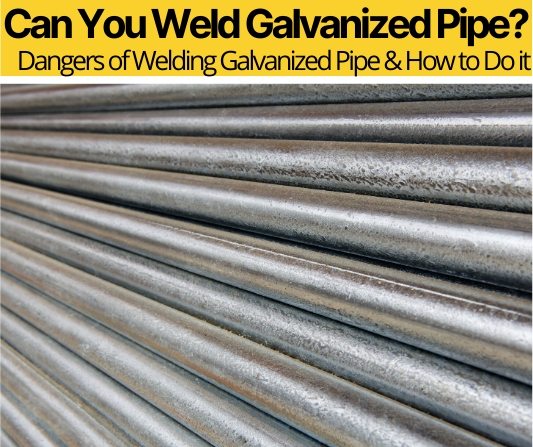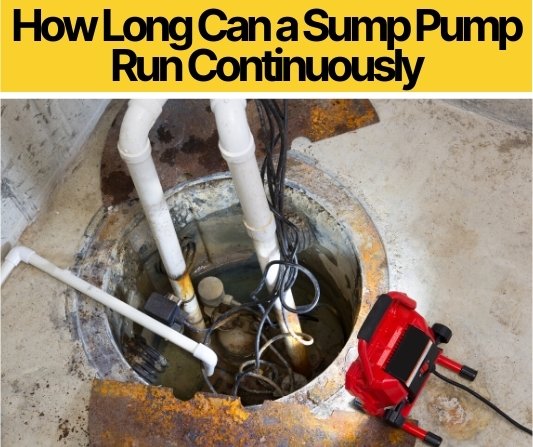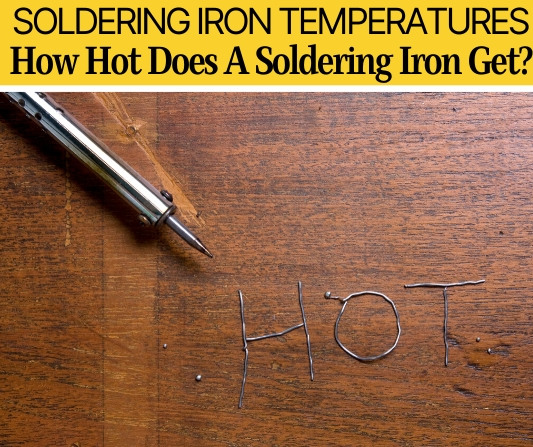 When you’re soldering, you always want to make sure you can do the best job you can.
When you’re soldering, you always want to make sure you can do the best job you can.
But that can be determined as much by your skill level, as by the type of soldering iron you’re using, and the temperature of it.
So how hot does a soldering iron need to be, Can it cause damage if it’s too hot?
What temperatures does a Typical Soldering iron reaches?
How Hot Does a Soldering Iron Get?
Electrical Soldering irons can reach temperatures of between 350°C-550°C, depending on the model and wattage of your soldering iron. Butane soldering irons can get as hot as 1700°C-2000°C ,not only they can reach higher temperatures you can also get better control of the temperature.
A soldering iron always needs to be a temperature above the melting point of the alloy its soldering. Most solders have a melting point between 180°C-190°C, which means you’d want to have a soldering iron that can at least get to a temperature of 350°C-400°C.
How hot a soldering iron needs to be for various tasks, depends on the wattage of your soldering iron. A general rule of thumb is the bigger and thicker the solder you’re trying to melt is, the higher the temperature you’ll need. Low-effect soldering irons will not be able to perform bigger jobs. But it works the other way. If you’re soldering on some electronics on a PCB (Printed Circuit Board), you could risk burning the appliance if the temperature is too high.
In this article we will see not only how hot various Soldering irons can get ,but also how hot does your soldering iron needs to be to perform various tasks.
Temperatures of Most typical Soldering Irons
Soldering irons can generally be categorized as either low-effect or high-effect.
Low-effect soldering irons range from 15w-30w and can solder alloys in small amounts. Low effect soldering irons need to reach a higher temperature to melt a solder than a high-effect soldering iron.
High-effect soldering irons range from 40w-100w, and can reach higher temperatures than a low-effect soldering iron, but they also do not have to reach as high a temperature to melt the same solder as a low-effect soldering iron.
Bottom line is: the higher the wattage, the lower the temperature a soldering iron needs to be to melt a solder.
20 watt
A 20 watt soldering iron can usually reach temperatures between 350°C -410°C. This may seem like enough to solder alloys with a melting point of 180°C -190°C, but the lower the wattage, the harder it is for a soldering iron to maintain its temperature. Any larger soldering job will not be possible with 20 watts. This type of soldering iron is good for home/hobby crafts.
25 watt
Soldering irons with 25 watts can reach a temperature, that’s a little higher than the 20 watts, of 380°C-430°C. There isn’t a huge difference in the wattage between 20-25 so, as you can imagine, there isn’t a huge difference in a 25 watts’ capability. This type of soldering iron will do well with soldering PCBs and motherboards.
30 watt
You can expect a 30 watt soldering iron to reach between 400°C-470°C. This may not seem like a massive step-up in terms of how hot the soldering iron can get, but a 30 watt is far better at maintaining its heat compared to a 20 watt. A 30 watt soldering iron should be suitable to do most electronic soldering. Ideal for any competent electronics hobbyist.
40 watt
A 40 watt soldering iron can have a maximum temperature between 440°C-500°C. This is the first in the range of the high-effect soldering irons, and can do heavier jobs than simply attaching components to a motherboard. This soldering can be used for RC equipment or audio equipment repairs. Professionals may opt for a 40 watt, or higher soldering iron, to give them a bigger range of temperatures.
60 watt
Soldering irons that have 60 watts of power can reach 470°C to 520°C. At 60 watts, the soldering iron can be too hot for circuit boards, but a user who is adept with soldering irons may choose to use one anyway, as it allows them to solder quickly. It is not advised for beginners to use a soldering iron with 60 watt, on electronics, as they risk burning it.
100 watt
An 100 watt soldering iron can reach a whopping 480°C -540°C. Definitely inadvisable to be used by beginners, and poses a high risk to frying circuit boards and their components, if the temperature is unregulated. This soldering iron can be used on automotive components and plumbing, due to its high temperatures. Mainly used by professionals and advanced hobbyists.
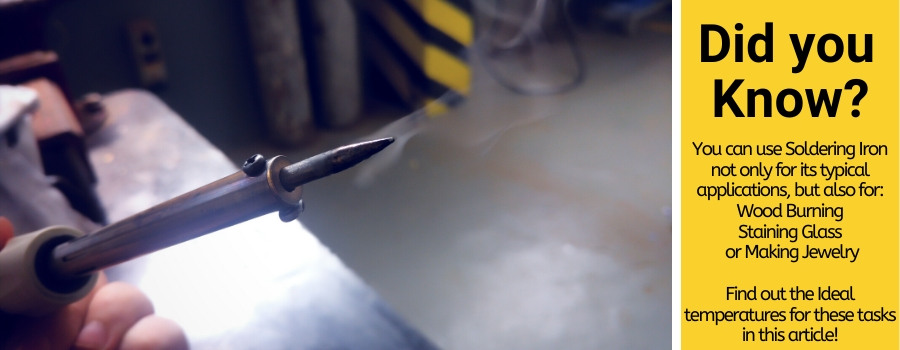
How hot does a butane soldering irons get?
A butane soldering iron differs to an electric soldering iron in that it burns butane to achieve its heat. Butane soldering irons are far more versatile in the temperatures they can reach and can consistently stay at those temperatures more easily. You can expect a butane soldering iron to reach temperatures anywhere between 450°C-2000°C.
Read also: Why Does Soldering Iron Tip Turn Black
Bernzomatic
Bernzomatic butane soldering irons can reach temperatures of up to 1700°C. Take this number with a pinch of salt however, as this is its flame temperature, not its soldering temperature. Regardless, this is one of the hottest butane soldering irons you can get, and is ideal for large soldering jobs that require a lot of heat to properly fuse joints. It heats up very quickly and is ideal for heat shrinking and jewellery.
Dremel
Dremel butane soldering irons also clock a maximum temperature of 1700°C for the flame setting. They are very versatile, due to their temperature and tips, allowing heat shrinking, hot cutting and woodburning. The temperature control on a Dremel butane soldering iron, and most butane soldering irons for that matter, makes them more precise and easier to use compared to an electric soldering iron, as you’re a lot less likely to solder a bad joint.
Weller
Weller butane soldering irons burn at a lower temperature of 450°C-500°C, compared to the previous two. Despite the lower temperature, it still heats up in seconds, compared to an electric soldering iron which can take minutes, and can be used both for hobbyist and professionals alike. Weller soldering irons seem a good mid-range option, for a balance between temperature and ease of use.
Iso-Tip
With a 1300°C flame setting temperature, the iso-tip is on the heavier side of the butane soldering irons. The Iso-tip butane soldering irons feel like a midway option between the Weller and Dremel, in the sense that they are suitable for both smaller jobs, like electronics, and larger jobs, like automotive parts. Recommended for hobbyists looking for a butane soldering iron.
How to tell if a soldering iron is hot
Depending on the wattage of your soldering iron, and the type of tip (the part of the soldering iron that heats up, it can come in many different materials, shapes and sizes), you will want a temperature hot enough to melt your solder, but not too hot that it could damage the components you’re soldering. The easiest way to achieve this is trial and error. Place a little bit of solder onto, or next to, the soldering iron. When it begins to melt, it is hot enough. If you notice burn marks on your electronics, the iron is getting too hot. Soldering irons with temperature controls are far easier to use in terms of monitoring temperature and ensuring your electronics are not damaged.
Related: Can Soldering Replace Welding?
How do I know if my soldering iron is too hot?
Similar to the previous answer, you will understand when a soldering iron is getting too hot if you are burning or frying electronic components. However, the temperature can be less indicative of whether the temperature is too hot, or whether you are not comfortable with soldering at that temperature. Many experts will use high temperatures to quickly and efficiently solder joints. Lower temperatures still may melt the solder, but achieve similar results in a longer time. A solder set to 350°C is a good temperature for soldering, that won’t get too hot too quickly when soldering on PCBs. However, if you begin to see discoloration of the circuit board, turning down the temperature can help prevent damage.
Ideal Temperatures & How hot should a soldering iron be For Various Tasks
When soldering, you’ll want to take into account what you’re actually soldering, and what you’re hoping to achieve, in order to decide the right soldering iron for the job. Low-effect soldering irons can be better for hobbyists and small jobs, as their temperatures don’t reach as high as other soldering irons. Alternatively, when wood burning, a butane soldering iron is more advised as it can maintain a certain temperature better. Higher temperature soldering irons can help a user be more precise with their work. But lower temperature soldering irons give the user more time to solder, which can be useful for a beginner. It isn’t necessarily correlative, but the lower the temperature, the easier you may find it to solder.
The material and shape of a tip also has an effect on the temperature and precision of a soldering iron. It is important, again, to evaluate what type of job you’re doing, and what type of tip would best suit the job. It would be very time consuming to use a sharp tip on a large soldering job and vice versa.
Electronics & Circuit boards
The temperature depends on the type of solder, the wattage of a soldering iron and the type of tip being used, but you can expect a temperature between 315°C -370°C to solder PCBs and SMCs (Surface Mount Computers). If you have a soldering iron with a temperature control, setting it to 260°C, and then increasing the temperature until the solder begins to melt is a helpful way to know the correct temperature.
For Copper
Again, the temperature depends on multiple components, wattage, solder, tip, but copper can be soldered at around 350°C-380°C using a mid-ranged watt soldering iron. This is an average estimate and, either through temperature control or trial and error, you can determine the temperature suitable for your soldering iron to solder copper. Copper is often be used in more precise soldering, so a sharper tip is advised.
Read also: Why Does My Soldering Iron Tip Turn Black
Stained Glass
A temperature around 360°C-380°C is a good temperature for staining glass, and a butane soldering iron is better to achieve a reliable temperature. A wider tip for the soldering iron will help solder two pieces of glass together well. However, the alloy used in stained glass soldering is tin and lead, but the ratio of the two differs, depending on what the purpose of the soldering is. This can affect the temperature.
Woodburning
How hot a soldering iron should be for wood burning depends not only on the previously mentioned criteria, but also on the type of wood being burnt. Pine and aspen are two types of wood that are easier to burn, and can expect to be burnt in the 250°C-300°C range. Some pyrographers like to use a temperature as high as 400°C, but high temperatures are generally used by professionals, and can be completely dependent on the job and soldering iron they are using. A small, sharp tip is advised for woodburning for precision.
Jewelry
Jewelry should be soldered in the range of 300°C -400°C depending on the skill level of the user, and the soldering job. Butane soldering irons are generally better to use with jewelry as the temperature is more stable, and can lead to a higher level of precision. Different types of tips will be used throughout jewelry soldering, and so the temperatures can differ slightly from tip to tip, even when using the same soldering iron.

